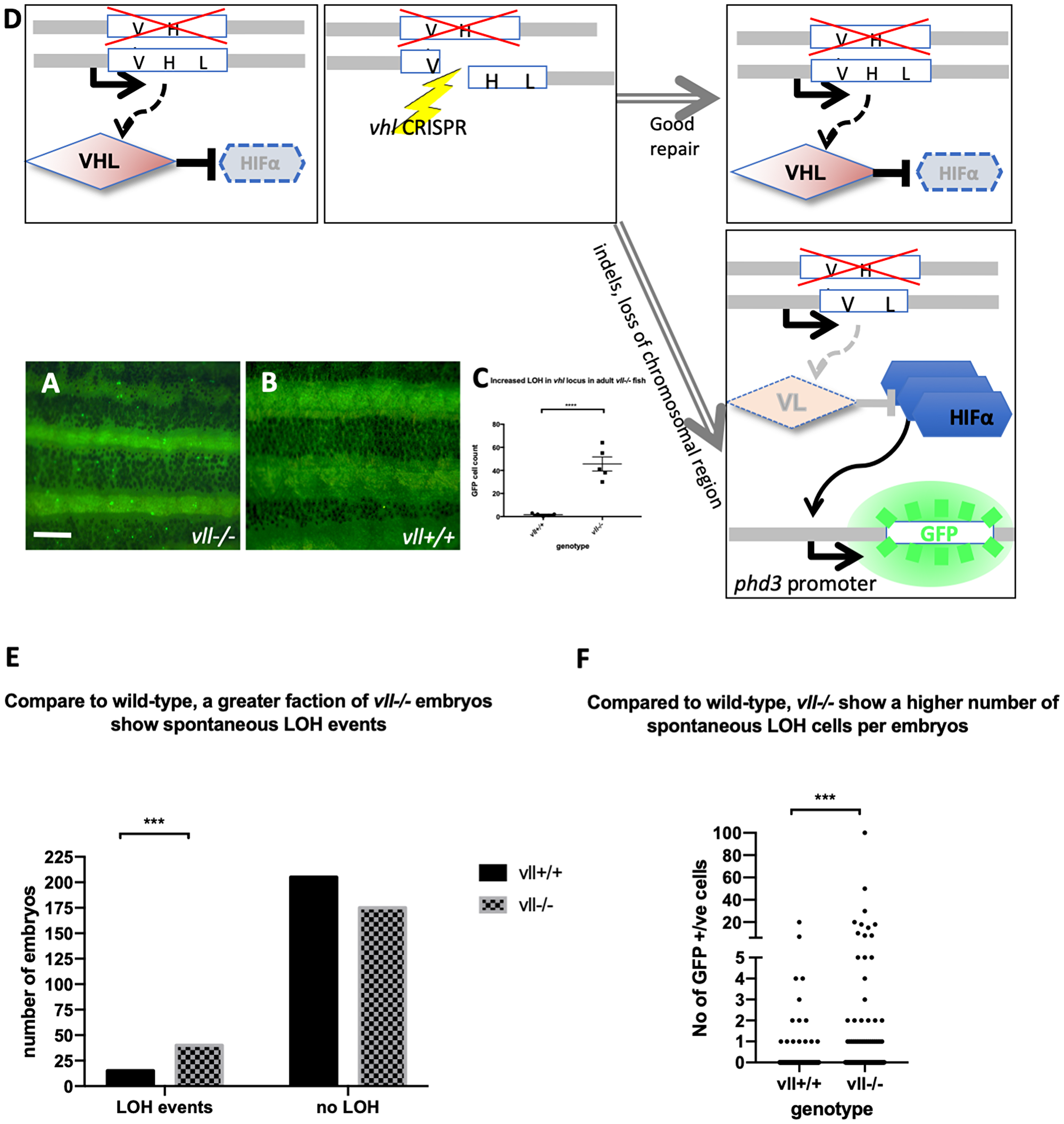Fig. 2 The adult vll–/– mutant fish are more susceptible to LOH in the vhl locus. (A and B) When we examined 6 months old vll–/– mutant fish, there was an increased number of spontaneous LOH in the vhl locus in vll–/– mutant fish in comparison to vll+/+ wild type fish. The increased LOH in vll–/– mutant fish was quantified in (C) ****p < 0.0001, unpaired t-test. Scale bar: 1 mm (D) Schematic diagram illustrating the principle of our reporter system that if DNA damage is introduced into the remaining wildtype vhl allele, for instance by a CRISPR, in the vhl+/–: Tg (phd3:: EGFP)i144 fish in response to the genotoxic stress and the damage is well repaired and no frameshift is introduced, the cells will remain EGFP negative. However, if the DNA damage introduced into the wild type allele is not repaired properly, the cells will lose heterozygosity and express very bright EGFP expression. (E) we also examined the spontaneous LOH at the vhl locus in vll–/– mutant embryos. Although the number of LOH events was much lower than that in adults and a majority of embryos did not have any LOH events, we found a statistically significant increase in the number of embryos that experienced a LOH event in vll–/– embryos in comparison to wild type embryos. ****p < 0.0001, Chi-square (and Fisher’s exact) test. (F) There was an increase in the number of EGFP positive cells in vll–/– embryos in comparison to wild type embryos. ***p < 0.001, unpaired t-test.
Image
Figure Caption
Figure Data
Acknowledgments
This image is the copyrighted work of the attributed author or publisher, and
ZFIN has permission only to display this image to its users.
Additional permissions should be obtained from the applicable author or publisher of the image.
Full text @ Oncotarget

